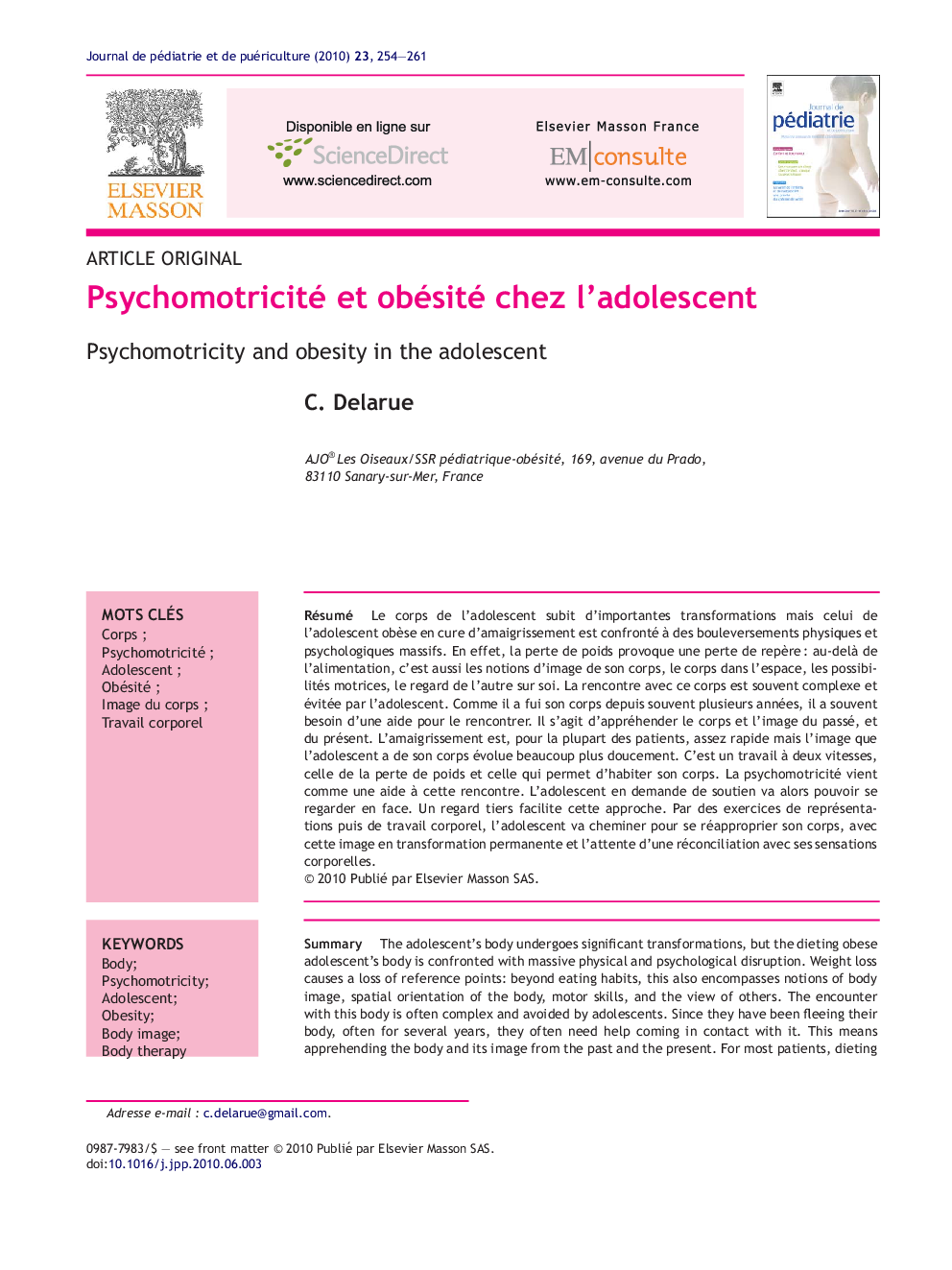| Article ID | Journal | Published Year | Pages | File Type |
|---|---|---|---|---|
| 4169822 | Journal de Pédiatrie et de Puériculture | 2010 | 8 Pages |
RésuméLe corps de l’adolescent subit d’importantes transformations mais celui de l’adolescent obèse en cure d’amaigrissement est confronté à des bouleversements physiques et psychologiques massifs. En effet, la perte de poids provoque une perte de repère : au-delà de l’alimentation, c’est aussi les notions d’image de son corps, le corps dans l’espace, les possibilités motrices, le regard de l’autre sur soi. La rencontre avec ce corps est souvent complexe et évitée par l’adolescent. Comme il a fui son corps depuis souvent plusieurs années, il a souvent besoin d’une aide pour le rencontrer. Il s’agit d’appréhender le corps et l’image du passé, et du présent. L’amaigrissement est, pour la plupart des patients, assez rapide mais l’image que l’adolescent a de son corps évolue beaucoup plus doucement. C’est un travail à deux vitesses, celle de la perte de poids et celle qui permet d’habiter son corps. La psychomotricité vient comme une aide à cette rencontre. L’adolescent en demande de soutien va alors pouvoir se regarder en face. Un regard tiers facilite cette approche. Par des exercices de représentations puis de travail corporel, l’adolescent va cheminer pour se réapproprier son corps, avec cette image en transformation permanente et l’attente d’une réconciliation avec ses sensations corporelles.
SummaryThe adolescent's body undergoes significant transformations, but the dieting obese adolescent's body is confronted with massive physical and psychological disruption. Weight loss causes a loss of reference points: beyond eating habits, this also encompasses notions of body image, spatial orientation of the body, motor skills, and the view of others. The encounter with this body is often complex and avoided by adolescents. Since they have been fleeing their body, often for several years, they often need help coming in contact with it. This means apprehending the body and its image from the past and the present. For most patients, dieting is relatively rapid, but the image adolescents have of their body evolves much more slowly. This work is done at two speeds: the time it takes to lose weight and that necessary to inhabit one's body. Psychomotricity can be an aide in making this contact. Adolescents in need of support can thus look at themselves objectively. An outside view facilitates this approach. Through representation activities and then body therapy, adolescents can advance toward reclaiming their body, with their body image in constant transformation and the expectation of reconciliation with their physical sensations.
